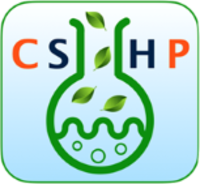Work With Us
PDRA Positions
Funded vacancies will be advertised when available. The links below detail other potential sources of funding. Please contact Matthew by email (matthew.langton@chem.ox.ac.uk) if you would like to discuss applying for a fellowship, including a cover letter detailing your research interests and CV. Assistance will be provided for competitive applicants.
The Royal Society Newton Fellowships
Marie Curie Fellowships
Violet and Samuel Glasstone Research Fellowships
Max Planck Society Fellowships
Alexander Von Humboldt Foundation
EPSRC Postdoctoral Fellowships
NATO Science for Peace Program
EMBO Fellowships
Oxford Colleges Junior Research Fellowships
General information regarding funding can be found here.
DPhil Positions
We expect to take on 2-3 DPhil (PhD) students each year, depending on funding. Applications must be received via the central university application portal; informal enquires can be directed to Matthew. Funded studentships are typically advertised on the departmental webpage. There are a wide range of scholarships available to study in Oxford. More information can be found here.


We are a member group of the Inorganic Materials for Advanced Manufacturing Centre for Doctoral Training (IMAT CDT) which offers a fully-funded four year course comprising taught courses and a forty-two month substantive research project. We have hosted numerous DPhil students from the previous OxICFM CDT.
We are also affiliated with the Chemical Synthesis for a Healthy Planet (CSHP) CDT and the Chemistry in Cells CDT. We have hosted both full DPhil projects and rotation students from the previous SBM organic chemistry CDT; as well as the Interdisciplinary Bioscience (BBSRC Doctoral Training Partnership).
Current DPhil opportunities
Direct entry to the group (DPhil in Chemistry):
- Photo-responsive amino acid transporter in synthetic cells
3 year studentship funded by Leverhulme Trust, Home rate
deadline 14th November 2025
Doctoral training centres: deadlines 8th January 2026
- IMAT P12) Regulating transmembrane flux in paramagnetic nanomaterials for functional magnetic resonance imaging
With Prof. Jason Davis and Dr Maximilian Skoda (ISIS Neutron and Muon Source)
- IMAT P13) Designing active matter via controlled molecular transport and oscillations
With Prof. Steve Fletcher
- IMAT P14) Photo-responsive and emissive fibres for binding, sensing, and controlled release
With Prof. Jin-Chong Tan (Oxford Engineering)
- CSHP P9) Compartmentalised whole-(synthetic)cell biocatalysis for the direct synthesis of valuable active pharmaceutical ingredients
With Prof. Anne Duhme-Klair (York); industrial partner: Ineos Oxford Institute
This project is based at the University of York
- CSHP P14) Micellar organo-catalysis in water using earth abundant main group elements
With Prof. Seishi Shimizu (York); industrial partner: Centre for Transformation of Chemistry
Part II Positions
We host typically 2-3 Part II students in the group each year, and projects typically involve a combination of synthesis of molecular systems and determining their properties and functions through quantitative spectroscopic and imaging techniques. Recent Part II's have seen their work published (see below), and stayed on in the group (or moved elsewhere) for a DPhil. Three of our recent students have won the thesis prize / runner up prize for best Part II inorganic chemistry thesis.
Recent papers co-authored by undergraduate students (underlined):
- Off-On Photo- and Redox- Triggered Anion Transport Using an Indole-Based Hydrogen Bond Switch
M. Ahmad, A. Muir and M. J. Langton, ACS Omega, 2024, 9, 45, 45572-45580
- Coupling Photoresponsive Transmembrane Ion Transport with Transition Metal Catalysis
X. Chao, T. G. Johnson, M. Temian, A. Docker, A. L. D. Wallabregue, A. Scott, S. J. Conway and M. J. Langton, J. Am. Chem. Soc., 2024, ASAP
- Inter-Vesicle Signal Transduction Using a Photo-Responsive Zinc Ionophore
S. A. Gartland, T. G. Johnson, E. Walkley and M. J. Langton, Angew. Chem. Int. Ed., 2023, 62, e202309080
- Halogen Bonding Relay and Mobile Anion Transporters with Kinetically Controlled Chloride Selectivity
T. G. Johnson, A. Docker, A. Sadeghi-Kelishadi and M. J. Langton, Chem. Sci., 2023, 14, 5006-5013
- Photo-switchable Anion Binding and Catalysis with a Visible Light Responsive Halogen Bonding Receptor
A. Kerckhoffs, I. Moss and M. J. Langton, Chem. Commun., 2023, 59, 51-54
- A Photo-responsive Transmembrane Anion Transporter Relay
T. G. Johnson, A. Sadeghi-Kelishadi and M. J. Langton, J. Am. Chem. Soc., 2022, 114, 10455-10461
- Red-shifted Tetra-ortho-halo-azobenzenes for Photo-regulated Transmembrane Anion Transport
A. Kerckhoffs, Z. Bo, S. E. Penty, F. Duarte and M. J. Langton, Org. Biomol. Chem., 2021, 19, 9058-9067


